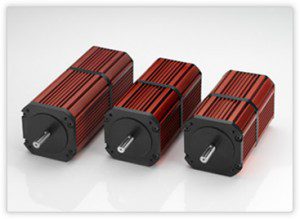The hard-working servomotor is being asked to do ever more these days, and it’s stepping up to the challenge in a lot of different ways.
The challenge isn’t new; more power, more torque, in a smaller package for less cost. And that’s exactly what’s been happening. Servomotor manufacturers are indeed increasing motor torque density while managing to decrease motor size.

A big reason why this has been possible is the use of high-powered rare-earth magnetic materials, such as neodymium-iron-boron magnets, according to Dan Jones, a seasoned motor design veteran and President of Incremotion Associates, a California-based engineering design and marketing firm. Along with more powerful magnetic materials are some changes in servomotor design. For example, “instead of putting magnets on the surface of the rotor we’re putting them inside the rotor structure. The reason is that we can develop a reluctance torque to vectorially add to the normal permanent magnet torque, which might mean an increase of 30 to 40%” says Jones.
And of course, smaller magnets that pack the same punch as larger ones contribute to boosting torque density and decreasing motor size.
Another way to increase torque and reduce size is by focusing not on the magnets but on the method for winding copper wire, says Dean Malott, an electrical engineer at Stober Drives. The method is fairly well established and simple to grasp. The torque density in a servomotor can be increased by using automatic winding machines. An automatic winder vastly reduces the wasted space between copper wire, which is typical of hand-winding techniques, and so having more copper fill in less space boosts the torque density. It also contributes to as much as a 40% decrease in motor length within the same frame size. So again, you’ve got more power in a smaller space.
These motor size reductions are accelerating a long-standing trend toward more fully integrated servomotors; that is, packing a servomotor, encoder, controller, and drive all in one unit.
According to Brad Spahr, President of Specialty Motors, and Gary Schultze, an engineer with the company, these types of motors are becoming more cost effective to use in a number of applications where before this was not possible. One example is in pumping applications for dosing and dispensing. In the past, such applications would use a brushless DC motor operating in velocity mode with a separate controller, sometimes with a gear reducer added. This could limit the range of velocity over which the motor could operate. Now, using an integrated servomotor can provide improved accuracy, eliminate the use of gearing, and the motor can be accurate over the entire velocity range.


Leave a Reply
You must be logged in to post a comment.